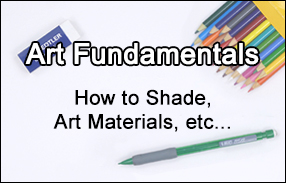
Step 15: Use the main circle as a guide to draw the rest of the Scottish fold's head. Use quick, short strokes as you follow the basic path of the circle to create the furry shape of the head. Longer strokes will give the fur a shaggier appearance. Make the sides of the head a bit wider than the initial circle. Draw two rows of quick, short strokes underneath the cat's chin for the extra fur on the neck.

Step 16: Use the line on the right side of the body as a guide to draw the Scottish fold's extended front leg. Follow the basic path of the guide and lightly sketch the shape of the leg around it. The left side of the leg should be wide. Then it should bend, and the rest of it should be narrower. Sketch the shape of the leg lightly at first. When you get the structure right, use quick, short strokes to darken it.
Use the circle at the end of the line as a guide to draw the Scottish fold's paw and toes. Draw the shape of the paw within the circle. Use short, curved lines to separate the individual toes. At the end of each toe, draw a small circle for the fleshy padding. In the middle of the paw, draw a shape similar to a half- circle for the main part of the padding. Add a couple more curved lines on the padding to give it more texture.

Step 17: Use the angled line in the middle as a guide to draw the Scottish fold's other front leg. Lightly sketch the shape of the leg around the guide. Make the top part wide and the bottom part narrow. When you get the leg's structure right, darken the shape using quick, short strokes for the fur. Draw a series of short curved lines at the tip of the cat's foot to separate the individual toes.

Step 18: Use the initial arcs under the head as guides to draw the body. Darken the outer edges of the guides using quick, short strokes to represent fur. Add a few strokes within the body to give it a furry texture. Don't draw below the Scottish fold's front leg or tail at the moment.

Step 19: Use the curved line on the lower, left side as a guide to draw the tail. The shape of the Scottish fold's tail should be thick. It should partially overlap the guide for the hind leg. The tip of the tail should curve up toward the body. Use longer strokes for shaggier fur.







